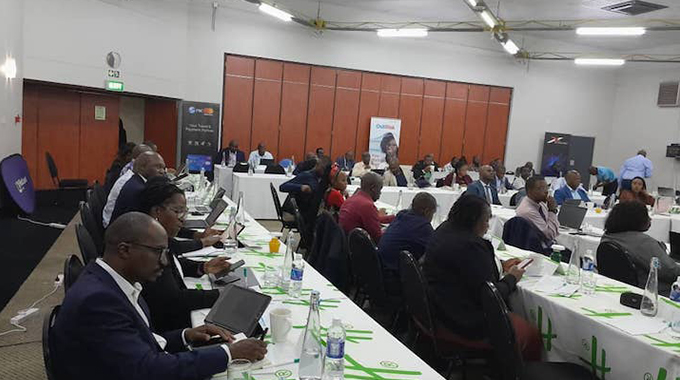New suburb to tackle Bulawayo housing backlog

Peter Matika, [email protected]
THE Infrastructure Development Bank of Zimbabwe (IDBZ) is developing an upmarket suburb in Bulawayo which has 114 residential stands ranging from 3 500 to 9 000 square metres in size.
The estimated cost of developing the suburb, known as Willsgrove, is US$4,5 million.
The latest development is set to help clear the city’s housing backlog which stands at 125 000. Last year, the Bulawayo City Council (BCC) availed more than 1 600 housing stands across the city, meant to be developed as the city upped its housing development strategy in a bid to reduce the housing backlog.
The housing backlog in the city has been a cause for concern over the past few years and this has further been exacerbated by a number of private developers that have abandoned their projects leaving the local authority with the task of completing the projects.
This has left beneficiaries and the city council at loggerheads after the latter demanded that the former pays for the completion of the projects in cash.
Council, thus, awarded a number of stands in the city to private developers following the success of a housing development strategy, where developers submitted expressions of interest and then were required to use their own funds to develop areas of interest.
According to a recent BCC report, the local authority is now mandated to enter into a service agreement with the prospective developers.
It was stated that developers must not collect or receive any payments from the purchasers before the stands have been fully serviced and any violation of the clause will lead to the cancellation of the agreement.
Developers under the clause are required to deduct and remit to council the cost of the intrinsic land value and town planning charges per stand.
All developers are also expected to title survey and fully service the stands with roads, sewer, and water, with an environmental impact assessment expected to be carried out and submitted to the Environmental Management Agency for approval before any works were carried out.
Council has also outlined 5 390 residential stands in its layout plans in line with the respective master plan and local plans to produce stands to meet demand for the various uses.
The master plan has been adopted by council and has gone through public exhibition with a consultant attending to comments received from the public.
Government, through the IDBZ, has also completed constructing the massive US$17 million student accommodation complex in Bulawayo.
The multi-purpose flats complex dubbed “Bulawayo Students City” and is now ready for occupation, has 516 rooms that are expected to accommodate 1 023 students.

Significant strides have been made to address the city’s accommodation challenges with various housing projects being established across the city.
In an interview yesterday, IDBZ chief executive officer Mr Thomas Zondo Sakala said the establishment of the suburb is in response to a huge demand for accommodation in the country.
“The national waiting list is currently estimated at 1,25 million while Bulawayo’s waiting list stands at 125 000. This project is, therefore, targeted at providing accommodation to one million by 2025,” he said.
“IDBZ’s long-term strategy seeks to cater for all and provide at least 5 000 serviced stands with access roads, water, sewer, and electrified stands by 2025.”
Mr Sakala said the stands were available to developers at an estimated US$4,5 million cost.
“The stands are fully serviced and as we speak, they are at 97 percent completion. They have created employment in the construction industry, reduced the housing waiting list, and provided decent accommodation to at least 114 households,” he said.
Last year, Housing and Social Amenities Minister Daniel Garwe unveiled 90 fully serviced stands at Hopelyn Housing Estate near Mahatshula suburb, with more expected. The Hopelyn project is part of the US$11 million national housing scheme that will result in the construction of thousands of low-cost housing units in selected parts of the country.
Financial services institution, BancABC, is implementing the Hopelyn project funded by Shelter Afrique, and will benefit home seekers from Bulawayo, Harare, Gweru, Masvingo and Mutare.

workers put final touches to a road in Willsgrove suburb along Gwanda road (Picture by Nomthandazo Masuku)
Shelter Afrique is a Pan-African banking institution that exclusively supports the development of affordable housing and real estate sector development in Africa.
In November 2020, Cabinet adopted the Zimbabwe National Human Settlements Policy (ZNHSP), which was subsequently officially launched by President Mnangagwa last year in September.
The ZNHSP, which replaced the National Housing Policy of 2012, addresses several shortcomings inherent in the preceding policy outline as it addresses the housing and social amenities backlog while reducing the rural and urban divide.
The policy is in line with Vision 2030 and also dovetails with other regional and international development policies.
It integrates the implications of climate change with aspects of rural and urban settlement planning, development and management.
The ZNHSP is important as it comes at a critical juncture when the country is in the midst of accelerated development in various sectors.
This pace in development means more demand for housing and well-planned settlements that make the ease of doing business achievable. Housing delivery is one of the key National Development Strategy 1 (NDS1) pillars.
ENDSulawayo












Comments